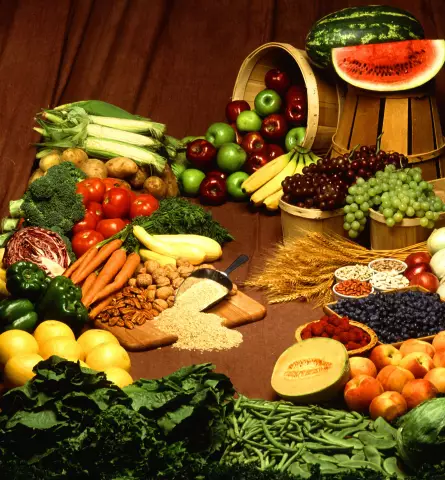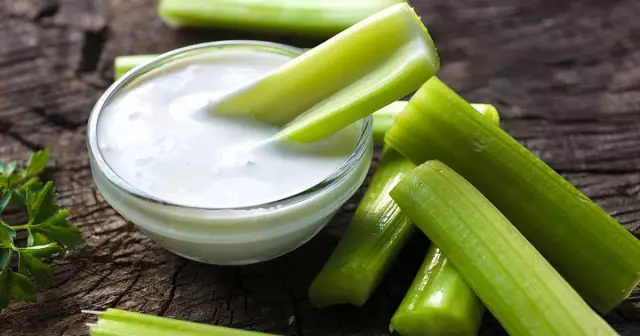- Author Rachel Wainwright [email protected].
- Public 2024-01-15 19:51.
- Last modified 2025-11-02 20:14.
Protein and vegetable diet
The name of the protein-vegetable diet speaks for itself - its diet consists of vegetables, fruits and protein products.
The most common cause of excess weight is the abuse of sweet and starchy foods that contain a large amount of carbohydrates. Carbohydrates are the main source of energy for the body, proteins are building materials, and fat is a store of energy for future use. If the intake of carbohydrates is reduced, the body begins to actively consume fat reserves. This is one of the main processes in a protein-vegetable diet. Another principle is the separate consumption of proteins and carbohydrates, which also activates metabolism, which means it helps to reduce weight.
The duration of the diet is 20 days.
The rules of the protein-vegetable diet are as follows:
- A clear schedule: two days of unloading, two - protein, two - fruit and vegetable, then the cycle repeats.
- Four meals a day.
- During the fruit and vegetable days, vegetables can be eaten without restrictions, and fruits with moderation, since otherwise the process of losing weight will slow down.
- At least half of the vegetables and fruits should be eaten fresh.
- On unloading and fruit and vegetable days, you need to drink 1-1.5 liters of clean non-carbonated water. On protein days, this amount should be increased to 2 liters per day.

Benefits of a protein-vegetable diet
For 20 days of a protein-vegetable diet, you can get rid of 5-8 kg of excess weight.
The habit of eating fractionally is developed. A diet high in fresh vegetables and fruits has a healing effect.
The diet has a beneficial effect on the skin, contributing to its cleansing, tightening, and improving complexion.
The list of allowed products allows you to create a fairly diverse menu, and this reduces the risk of breakdown.
Disadvantages and contraindications of a protein-vegetable diet
On fasting days, due to an excessively limited diet, well-being can significantly deteriorate.
If you return to the usual menu immediately after the end of the diet, rapid weight gain can occur, so the exit should be smooth.
Contraindications to a protein-vegetable diet are diseases of the digestive system, kidneys, endocrine disorders. People with chronic illnesses should consult a healthcare professional before starting a diet.
What foods are allowed?
- Vegetables (except potatoes).
- Fruits and berries (except mangoes, bananas, grapes).
- Low fat kefir and cheese.
- Low-fat varieties of meat, poultry and fish.
- Seafood.
- Eggs.
- Whole grain and rye bread.
- Unrefined vegetable oil.
- Green tea, black coffee.
What foods are prohibited?
All foods that are not on the permitted list are prohibited, including salt and sugar.
Protein and vegetable diet menu
Fasting days menu:
Sample protein day menu:
An example of a fruit and vegetable day menu:
Useful Tips
Tip 1. On any days, except fasting days, you can eat 1-2 tsp. natural honey.
Advice 2. The best time for such a diet is the summer-autumn period, when there is a wide range of vegetables and fruits and they contain the most useful substances.
| Diet characteristic | final grade |
| Duration: 20 days |
3 out of 5 The main principle of the diet is to limit carbohydrates in the diet and alternate fasting, protein and fruit and vegetable days, which avoids monotony. |
| Recommended frequency: every six months | |
| Weight loss rate: | |
| Safety: | |
| Variety of products: |
YouTube video related to the article:
Found a mistake in the text? Select it and press Ctrl + Enter.






